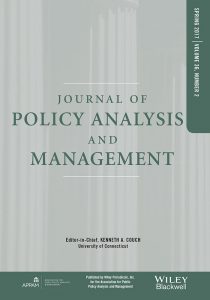Rhetorical Presidency
by ChristinaBlunt
 The Washington Post announced on Tuesday that between 2,000 and 4,000 military trainers would be required for the growth of the Afghan army in the coming years. This estimate comes from Admiral Michael Mullen, chairman of the Joint Chiefs of Staff. According to the report, Mullen also suggested that additional troops would be needed in the short term to provide security while Afghan forces are being developed. This testimony was given before the Senate Armed Services Committee; a hearing that comes in the midst of heightened political debate and floundering support over US involvement in Afghanistan. President Obama has already ordered an additional 17,000 US combat troops and 4,000 trainers this year, which will bring the total number of American service members to 68,000 by the end of 2009. Mullen explained that executing the President’s strategy would require not only combat efforts but also the provision of security, government services, and rebuilding the economy. Mullen stated at the hearing, “You can’t do that from offshore and you can’t do that just by killing bad guys. You have to be there.”
The Washington Post announced on Tuesday that between 2,000 and 4,000 military trainers would be required for the growth of the Afghan army in the coming years. This estimate comes from Admiral Michael Mullen, chairman of the Joint Chiefs of Staff. According to the report, Mullen also suggested that additional troops would be needed in the short term to provide security while Afghan forces are being developed. This testimony was given before the Senate Armed Services Committee; a hearing that comes in the midst of heightened political debate and floundering support over US involvement in Afghanistan. President Obama has already ordered an additional 17,000 US combat troops and 4,000 trainers this year, which will bring the total number of American service members to 68,000 by the end of 2009. Mullen explained that executing the President’s strategy would require not only combat efforts but also the provision of security, government services, and rebuilding the economy. Mullen stated at the hearing, “You can’t do that from offshore and you can’t do that just by killing bad guys. You have to be there.”
The President’s strategy will require a high level of commitment from the US government and the American people. It is arguable that President Obama inherited the conflict but it is one that he sticks by. He is at a disadvantage however, coming in midway and rallying the sort of support he needs to raise troop levels. In her recent article “Examining Emotion as Discourse: Emotion Codes and Presidential Speeches Justifying War,” Donileen R. Loseka, examines how past Presidents – specifically President George W. Bush- used emotion inspiring rhetoric to construct a narrative that would garner them wide-ranging support for military endeavors. Loseke asks the question, “How can appeals to emotion be accomplished in mass audiences characterized by heterogeneity [i.e. the modern state]?” She identifies “emotion codes”- “sets of socially circulating ideas about which emotions are appropriate to feel when, where, and toward whom or what, as well as how emotions should be outwardly expressed” – through which she attempts to develop a model for empirically examining emotional meaning as social phenomena.
Using three speeches given by the former President George W. Bush immediately after September 11, 2001 as her example, Loseke dissects the rhetoric used to construct the melodrama she calls, “The Story of September 11.” She explains that while humans aren’t emotional robots, emotion is not a completely individual phenomenon. By constructing this melodrama, this universal discourse, the speaker can tap a variety of emotion codes to ensure the support of the listener. “Feelings give rise to thoughts because cognitive decisions can be influenced by anticipated emotions, stories with emotional angles capture cognitive attention quicker than do those with out such angles, there is a greater message responsiveness when audience members feel an emotional connection to the issue…” Loseke examines the way in one paragraph of one of President Bush’s speeches he could encourage fear, pride, and anger. She explains that in this way, the discourse holds something for everyone. In order to emotionally engage citizens in a heterogeneous audience, one must “cast a wide net” by deploying numerous emotion codes and appealing to many emotions.
Loseke concludes by explaining that as the state becomes increasingly modern and therefore increasingly heterogenious, it is important for a president to deploy only the most widely held and deeply embraced emotion codes if he wishes to persuade wide public support. If Loseke’s logic is to be followed, the goal of the Obama administration will be to construct a discourse around the war in Afghanistan that stirs emotion across America. The US population is largely disconnected from the conflict and if President Obama wishes to increase troop commitment he must find a way to connect Afghanistan with their most salient emotions.
![]() Read the Article on the Washington Post
Read the Article on the Washington Post
![]() Read “Examining Emotion as Discourse” in the Sociological Quarterly online
Read “Examining Emotion as Discourse” in the Sociological Quarterly online
















1728-4457/asset/PopulationCouncilLogo.jpg?v=1&s=03074651676b98d6b9d0ef1234bd48fe7ff937c3)
I wonder will this connection to emotions require another act that can be framed in a way to elicit emotions? It seems that this might be a way to bridge the gap between the war and Americans.
Keri
Good post, I enjoyed that.